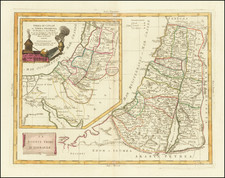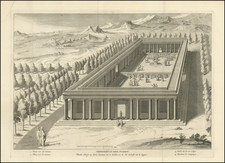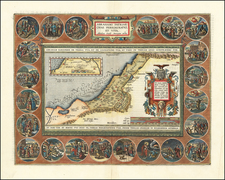Jerusalem’s First Tourist Map
Fine example of what has been described as the First Tourist Map of Jerusalem, by artist Spyro Spiridon.
Spiridon's mapping of Jerusalem, first issued in about 1930, offers a unique and intricate portrayal of the city as it was eighty-eight years prior, breathing life into the historical urban landscape of Jerusalem. Spiridon's map stands out for their detailed and aesthetic representation of the city, buildings, cultural, recreational, and governmental institutions, offering viewers a vivid glimpse into Jerusalem's past life. Spiridon's work transcends the conventional schematic depiction, imbuing his map with a sense of the city's once vibrant community and architectural heritage.
Spiridon, born in Jerusalem in 1894, embarked on a distinctive career path that led him to become a pioneer in the mapping of Jerusalem. After studying electrical and civil engineering in Switzerland, where he was exposed to modern tourist maps, Spiridon returned to Jerusalem. Faced with challenges in his engineering career, he shifted his focus towards mapping, aiming to depict Jerusalem's urban space in three dimensions. His efforts culminated in the publication of the first tourist map of Jerusalem by the Greek Orthodox Church and later by the Goldberg Press, marking a significant contribution to the cartographic representation of the city.
The maps meticulously mark the religious affiliations of various buildings, reconstructing neighborhoods and detailing significant structures with remarkable precision. Examples include the “Horva” and “Tiferet Yisrael” synagogues, the houses of the Yemenite neighborhood Ezrat Nidahim in Silwan, and the Djort al-Enab neighborhood, showcasing Spiridon's dedication to capturing the city's diverse cultural and religious heritage.
Significant landmarks such as Hansen House, the clock tower near the present-day Jerusalem City Hall, the Palace Hotel (now the Waldorf Astoria), and the Lemel School opposite the Edison Cinema are depicted with impressive detail. These illustrations not only serve as a visual archive of Jerusalem's architectural history but also as a testament to Spiridon's skill and vision in mapmaking.
The 1945 edition of Spiridon's map, notable for its east-oriented perspective—uncommon for maps of Jerusalem—continues to emphasize the importance of building illustrations. This orientation offers a unique vantage point, enriching our understanding of the city's layout and historical context.
Spiridon's maps are a testament to his legacy as a cartographer who not only documented the physical landscape of Jerusalem but also captured the essence of its historical and cultural identity. Through his work, Spyro Spiridon has left an indelible mark on the preservation and understanding of Jerusalem's past, making his maps invaluable resources for historians, researchers, and anyone interested in the rich tapestry of the city's heritage.











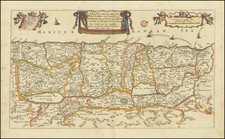
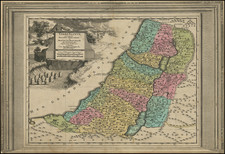
![[Mount Sinai] Schetse Van De Bergen Sinai En Horeb](https://storage.googleapis.com/raremaps/img/small/86431.jpg)
